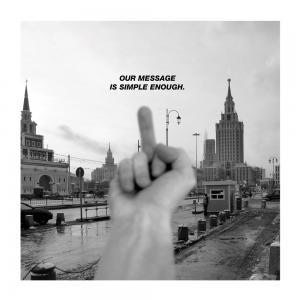Intermediate 7 develops conceptual models and diagrammatic frameworks that mediate between urban systems, architectural precedents and design approaches. We focused on visionary social machines in the context of Moscow’s nightlife in order to explore the ‘condenser club’ – the ultimate mixer and catalyst. Emphasising pragmatic research, infrastructural logic and relaxed methods, the projects delineated three areas of enquiry.
First, we examined the boundaries between the city and the ‘anti-city’. Dissident zones and decadent ‘infernos’ tantalised us with illusions of escape or entrapment. Acting as blenders and separators, nested megastructures collapsed numerous fragments and constructed trajectories along interwoven transcripts. These dystopian-realist scenarios remained aptly in-between fantastic provocations and pragmatic solutions to the city’s ills. Second, we synthesised infrastructures of flow and organisation to generate hybrid typologies.
We engineered social systems: networks and circuits loaded with programme. Conveyors of food chains, spines of art-factories and corridors of metro-labyrinths played on reversals of service and spectacle.
These decorated diagrams linked functionalist structures with intricate shapes and surfaces. Finally, we explored audience/performer relation-ships in adaptable sets. We injected dormant landmarks with dynamic mixtures of elements to facilitate mergers and crossovers. From flying-zoos and banya-bars to mood-tunnels, theatrical devices choreographed movements, framed images and staged atmospheres. As kaleidoscopic centrifuges, extravagant infrastructures and social transformers, our condensers dealt with extremes of functional intensity, material density and visual excess. Spectacular machines affected the operational appearance of the city, as captured in our diagrammatic matrices, hybrid drawings and visual scenarios.
Staff
Maria Fedorchenko
Tatiana von Preussen
Thanks to our workshop guests
João Bravo da Costa
Dirk Lellau
Jessica Reynolds
Gergely Kovacs
Ingrid Shroeder
Antoine Vaxelaire
Thanks to
Joseph Bedford
Brendon Carlin
Mark Campbell
Barbara-Ann Campbell-Lange
Monia De Marchi
Kenneth Fraser
Maria Mileeva
Kostas Grigoriadis
Eugene Han
Francesca Hughes
Sam Jacoby
Rosalie Kim
Fabrizio Matelana
Kathy O’Donnell
Damian Rogan
Nathalie Rozencwajg
Eva Sopeoglou
Brett Steele
Takero Shimazaki
Naiara Vegara
Thomas Weaver
and all other critics and guests
Jesper Victor Henriksson
The CREAM Factory is the capitalist realist industrialized cultural institution. It is the typological converging between the factory and the museum, a building accommodating the production, storage, exhibition and trading of art. A functionalist managed machine designed for breeding and preying surplus value. Set in Moscow, a context demarcated by political and financial instability where its ideological shifts have forced its urban fabric to endure numerous lobotomies and genetic manipulation. As a response to this condition The CREAM FACTORY is a proactive preservation strategy that, rather than to fall victim for nostalgia, focuses on progressively preserving and revising the theoretical properties of the existing. The now derelict and abandoned Hammer And Sickle Metallurgic Plant is re-opened through a critical reading of the linear diagram. The diagram that revolutionized not only the manufacturing of goods but also the confines of human life. By reading the factory first through its own historical context and secondly through an act of imposition upon the contemporary context of Moscow the discussion of its relevance and untapped potential begins to unravel. And when physically condensing the art world into one single architecture in a streamlined vertical integration of the industry, the projects seeks to illustrate and form a discussion wither the contemporary factory is in fact becoming the contemporary museum.The CREAM Factory is an exploration and exploitation of the relation between Culture and Capital. It is a study of how capital can influence architectural form but also how architectural form can influence capital. The project gives a diagnosis and illustrates the new roll and identity of the contemporary museum. How, when tied to rules of the free market, it has accumulated new ambitions that impose new programmatic and organizational challenges. Challenges that require a re-conceptualization of its architectural concept. By learning from the Factory, which since its birth has been a metaphor for progress and change and adopting its diagram, The CREAM Factory conveys a mutated typology of the Museum and Factory.
The project is a provocative illustration of a hypothetical condition. An alarming example, exaggerated to clearly illustrate a point. It is by nature a political act, since it has to react to the transformations in political, economic, and social environments. Proposing an architecture, The CREAM Factory, the prime instrument for proposing that change, becomes an instigator and ultimately an initiator.






























































